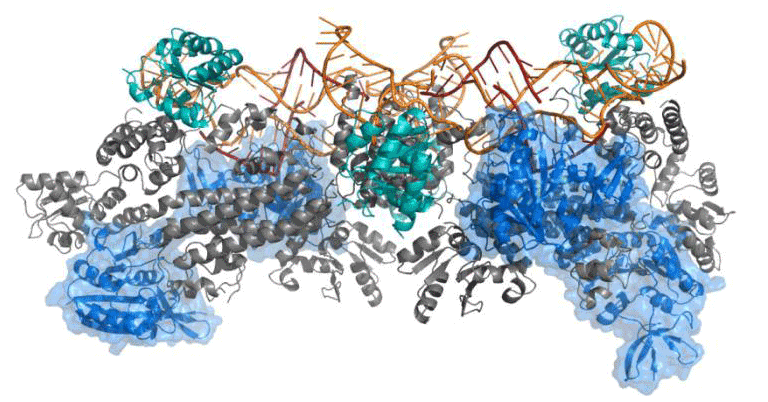With our recent Nature Methods publication we have now officially extended HADDOCK to support up to 20 separate molecules, expanding its capabilities as truly integrative modelling platform.

the box C/D enzyme for RNA methylation.
To deal with such a larger number of molecules, the initial random positioning of the components and the minimisation stage have been optimised. The paper also describes a method to select the most likely models after rigid-body docking and up-sample them during flexible refinement.
We hope in a near future to release a new version of our HADDOCK web portal that will support this new version, together with cryo-EM restraints among others. In the mean time this new HADDOCK version can be obtained for local installation upon request (the official distribution remains version2.2 at this time).
Read more about this in our publication:
- E. Karaca, J.P.G.L.M. Rodrigues, A. Graziadei, A.M.J.J. Bonvin and T. Carlomagno. An Integrative Framework for Structure Determination of Molecular Machines. Nature Methods 14, 897-902 (2017).
And in the following news item.
